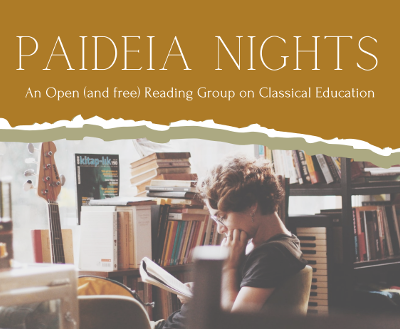Miriam Thompson
People often ask, 'What is the best age to start Latin with children?". This brief article will look at a new program coming out of the University of Dallas, which, using Classical pedagogy, presents Latin to children in a meaningful and engaging way from a very young age.
Sometime last year I was sitting in my bedroom while my children played outside; the next moment my three-year-old sped past the window on her bike, loudly singing ‘duc, duc, remos, duc!’ - the first line of a Latin nursery rhyme we had been learning that week. It was a great moment - not just because she was casually using an ancient language in her play - but because I could see first-hand that, with the right pedagogy, Latin can be introduced to children in a meaningful way at a very young age.
Members of the language faculty at the University of Dallas in Texas have spent the last few years developing a unique Latin program for young children (starting at kindergarten age). My five year-old son and I have had the privilege of being part of their pilot program as a homeschooling family (the two and three-year old are usually around for the lessons, hence their own language acquisition!). The Latin course, which will be titled Latin Through Stories, fills a gap in the market by providing an immersive Latin-learning experience. Most Latin courses which use an immersive or natural method such as the very popular Lingua Latina by Hans Ørberg and Latin by the Natural Method by Fr William Most are for older learners, and those courses aimed at younger students generally start around grade three; so according to my own survey of resources, Latin Through Stories is much needed.
The course is what Charlotte Mason might call a ‘living approach.’ Instead of treating Latin as an artefact to be dissected and analysed, it is treated as a living language, whereby, through lots of listening, speaking and meaningful engagement in Latin, one learns to communicate in the target language. The approach is entirely systematic and requires years of study for fluency: this is merely the foundation. The eventual, perhaps even life-long goal, is to read the works of Ancient Latin authors. The idea is that one is able to read and understand a language in which they can communicate with some facility.
The course is also based on the theory of Comprehensible Input. In this context, comprehensible input means that Latin is introduced to children in small, meaningful pieces which they can wholly understand usually with the assistance of pictures, actions, and their own knowledge of classic children’s songs, nursery rhymes, stories, Bible passages and so on. The language develops as they master the material which is provided. The course director, Dr Laura Eidt, states that the “curriculum aims at providing as much as possible rich, abundant and compelling comprehensible input.” In this course, and those using a similar method (available for older children or adults) grammar is not dispensed with, but is introduced in context, in a systematic way, and at an appropriate age.
This course thus differs from many others on the market which use a grammar first or grammar-translation method, or a hybrid of grammar and Latin reading and speaking. From day one children are singing familiar prayers, songs and nursery rhymes in Latin (‘Duc, duc, remos, duc’ is the Latin equivalent of ‘Row, row, row your boat’), learning and acting out short stories called ‘Gouin series’, using the Socratic method to discuss beautiful artworks in Latin, and reading famous children’s stories by authors such as Eric Carle which have simple, repetitive texts. The first levels are situated in the natural world: animals, farms, and the forest, and further levels will look at the seasons and fables. Dr Eidt explains that in the early levels of the course the aim is to bring Latin into the world of the child, and in the later years, to bring the child into the world of Latin in the context of ancient Rome.
Admittedly I did have some apprehensions about this method of learning Latin, considering Comprehensible Input was developed only in the 1970s: Is this really a ‘classical way’ of learning Latin? However, the research of the University of Dallas concludes that there is “no single classical language teaching method.” During the Middle Ages and the 18th and 19th centuries, grammar drills and analysis were the predominant method, however, methods have varied greatly over the centuries. “In the classical era, the Renaissance, and the early to mid-20th century, intuitive command of the target language was fostered, and formal knowledge seen as mere reinforcement of practical mastery.” Suffice it to say, this course is rooted in classical pedagogy, even if we’re not familiar with what that can look like.
Perhaps one question that might remain is: “why bother from such a young age?” Without a course such as this one, I probably wouldn’t start this early. While children are certainly capable of memorising grammar forms - and that foundation may indeed be better suited to the language pedagogy one wishes to pursue - I love the idea of my own children or students having a real, meaningful experience of Latin that is full of stories and songs and capable of evoking wonder (in a way that amo, amas, amat might not!). Through a course such as this, that experience is possible. Children are excellent language-learners, and their capacity to absorb language and understand it is incredible, so with the right course, I guess the answer is “why not?” To my mind, there is no harm in exposing children to a beautiful ancient language using a wholesome and completely age-appropriate curriculum - if one has the opportunity to do so. This is also not to say that other Latin pedagogy doesn’t work, but if one wants to start young, this is a fitting way to do so.
Latin Through Stories is currently being prepared for publication and so is not yet available to the public, but if you would like any further information about using this course in your home or school (including tuition options), please get in touch! My email address is






